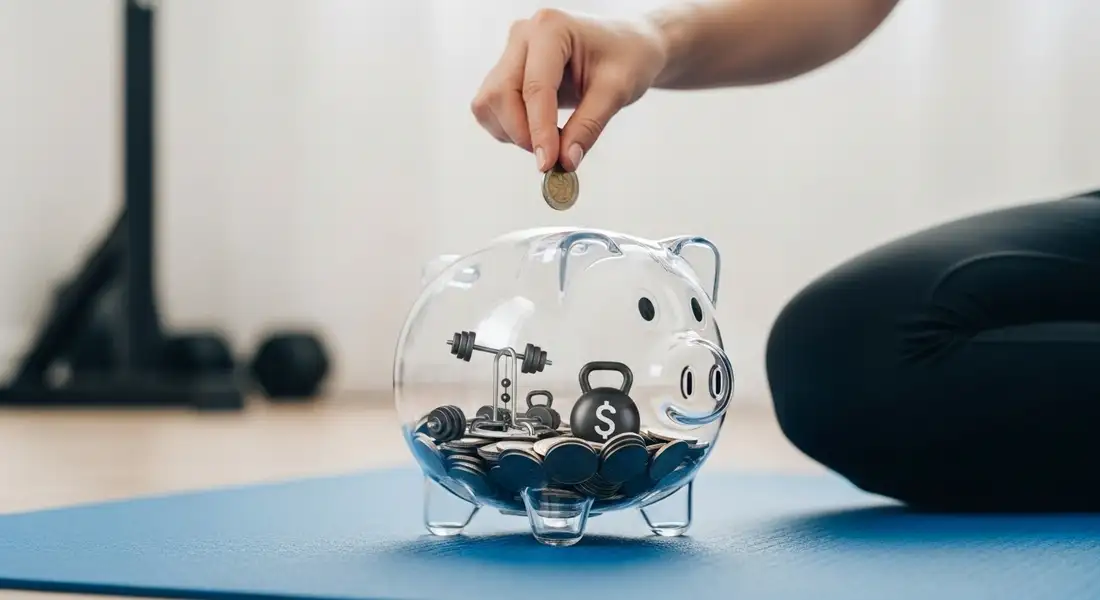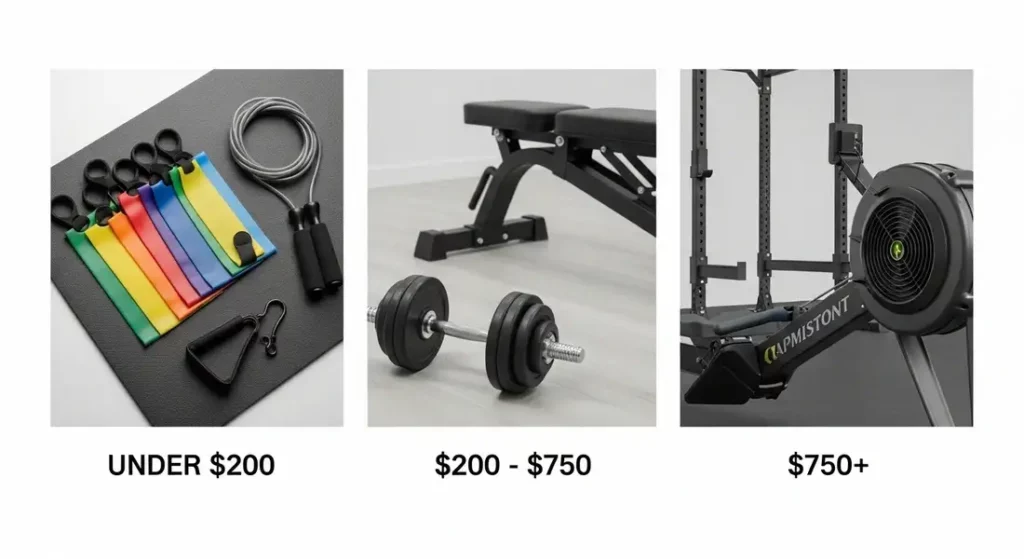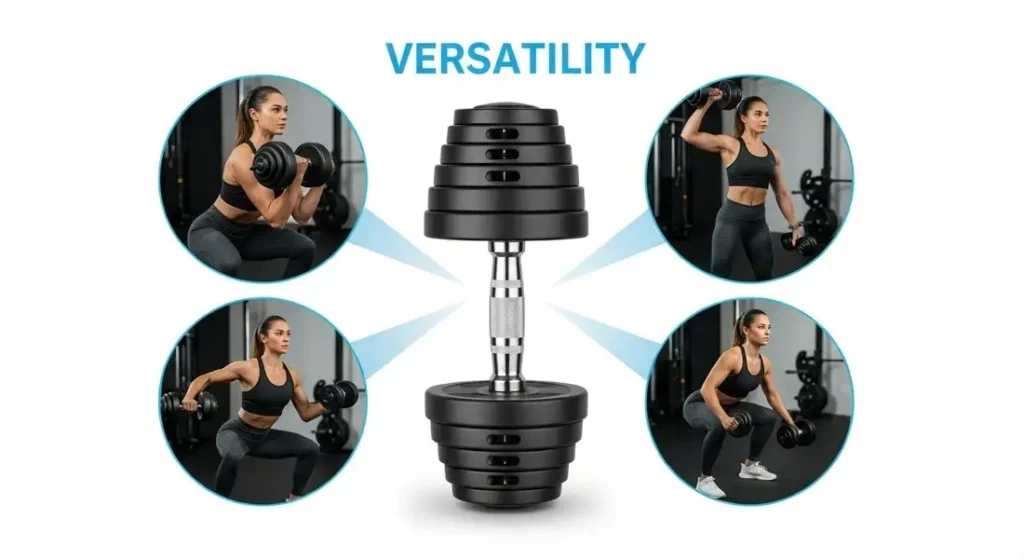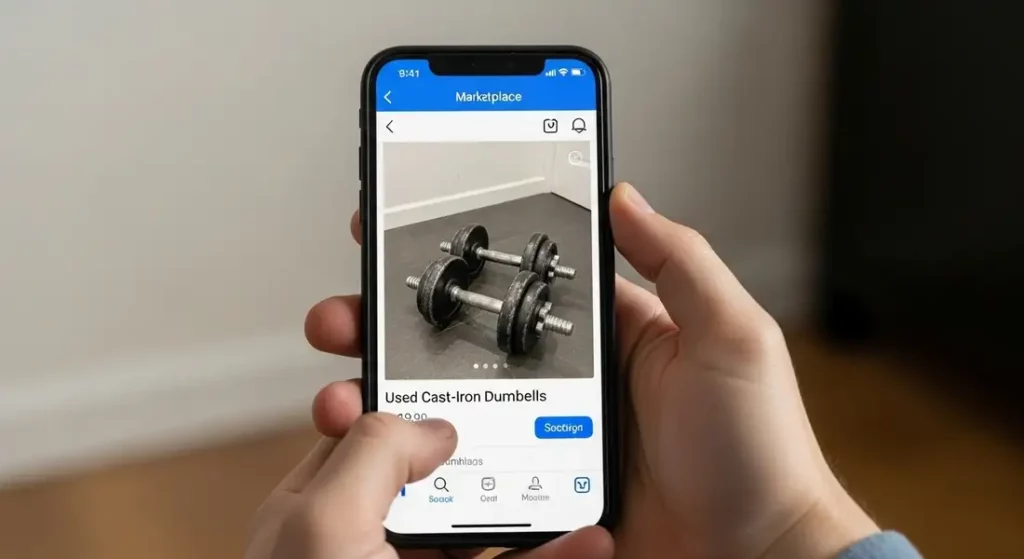You’ve picked the perfect location for your home gym and you know how crucial protective flooring is.
Now comes the question that stops many beginners in their tracks: “How much is this all going to cost?”

The fear of a massive price tag is understandable, but here’s the truth: a home gym is not an expense, it’s an investment in your health.
And the best part?
It’s an investment that can fit any budget.
You don’t need to spend thousands of dollars to create a space that delivers incredible results.
This guide, a key part of our Ultimate Beginner’s Guide to Setting Up a Home Gym, will show you how to plan your spending, prioritize smart purchases, and build a home gym that helps you reach your goals without emptying your wallet.
Why You Need a Budget (Even a Small One)
A budget isn’t a restriction; it’s a roadmap.
It transforms a vague idea of “getting some equipment” into an actionable plan.
A clear budget helps you:
- Avoid Impulse Buys: It’s easy to get tempted by flashy, single-use gadgets. A budget forces you to ask, “Is this the most effective use of my money?”
- Focus on Versatility: With a plan, you’ll naturally gravitate towards multi-functional equipment that provides the most bang for your buck.
- Build Over Time: A budget helps you see your home gym as a long-term project. You can plan for “Phase 1” now and “Phase 2” later, growing your gym as your commitment and finances allow.
How Much Does a Home Gym Really Cost? Budget Tiers Explained

Let’s break down what you can realistically achieve at different budget levels.
The “Scrappy Starter” Gym (Under $200)
This is the perfect entry point to prove to yourself that you can stick with a routine.
The focus here is on mastering bodyweight movements and using simple, effective tools.
You can build incredible foundational strength with this setup.
- Essential Gear:
- A High-Quality Exercise Mat: Protects your body during floor exercises.
- Resistance Bands (Loop & Tube): The ultimate home workout tool. They provide variable resistance for strength training and are perfect for small spaces.
- Jump Rope: An unbeatable, low-cost cardio machine.
- The Result: A highly effective, portable, and storable gym that can be set up in minutes. For a complete shopping list, check out our Budget Home Gym Starter Kit for Beginners.
The “Versatile Performer” Gym ($200 – $750)
This is the sweet spot for most beginners who are ready to commit.
At this level, you introduce free weights and key pieces that dramatically expand your exercise options for building serious muscle and strength.

- Essential Gear:
- Everything from the Starter Gym, plus…
- Adjustable Dumbbells: This is the single best investment for a home gym with limited space. A single pair replaces an entire rack of weights, allowing for true progressive overload.
- An Adjustable Weight Bench: Instantly transforms your dumbbell workouts, allowing for presses, rows, and dozens of other exercises. See our top picks for the best home weight benches.
- A Kettlebell or Sandbag: These are functional fitness powerhouses. A single sandbag can be used for squats, carries, presses, and more, making it a contender for the only tool you need.
- The Result: A complete, all-purpose home gym that will serve you well for years, allowing for full-body strength and cardio workouts.
The “Dedicated Enthusiast” Gym ($750+)
If you’re all in and have the space and budget, this tier allows you to add a major “centerpiece” item to your gym, replicating a commercial gym experience.
- Potential Centerpiece (Choose One to Start):
- A Power Rack or Squat Stand: Essential for safe, heavy barbell training (squats, bench press). Explore options in our guide to building stronger legs with squat racks.
- A Quality Cardio Machine: Choose one that you genuinely enjoy using, whether it’s one of the best home rowing machines or a top-tier elliptical.
- A Multi-Station Home Gym: An all-in-one machine that guides your movements, great for beginners who want structure and safety.
- The Result: A premium home gym that can rival any commercial facility, tailored specifically to your favorite style of training.
Smart Strategies to Save Money

Regardless of your budget, everyone loves a good deal.
Use these tips to make your money go further.
- Prioritize Versatility Above All: Before buying any piece of equipment, ask: “How many different exercises can I do with this?” A sandbag, a set of dumbbells, or a suspension trainer will always be a better investment than a machine that only works one muscle group.
- Buy Used (With Caution): Simple iron is hard to break. Look for used dumbbells, weight plates, and barbells on Facebook Marketplace or Craigslist. Inspect them for cracks or serious rust, but a little wear is fine. Be more cautious when buying used cardio machines or complex equipment with many moving parts.
- Look for Holiday Sales: Fitness equipment often goes on sale during major holidays like Black Friday, Cyber Monday, and New Year’s. If you can be patient, you can save a significant amount.
- Don’t Forget the “Hidden” Costs: Factor in the cost of your flooring, any mirrors, storage solutions, and shipping fees into your total budget. These can add up quickly if you’re not prepared.
Your Investment, Your Health
Building a home gym is one of the best investments you can make in your long-term health and well-being.
By setting a clear and realistic budget, you can create a powerful and motivating workout space without financial stress.
Start where you are, use what you have, and add to your gym over time.
Now that you’ve planned your purchases, the next step is to figure out where to put it all.
Next Step: Discover Smart Storage Solutions for Your Home Gym
